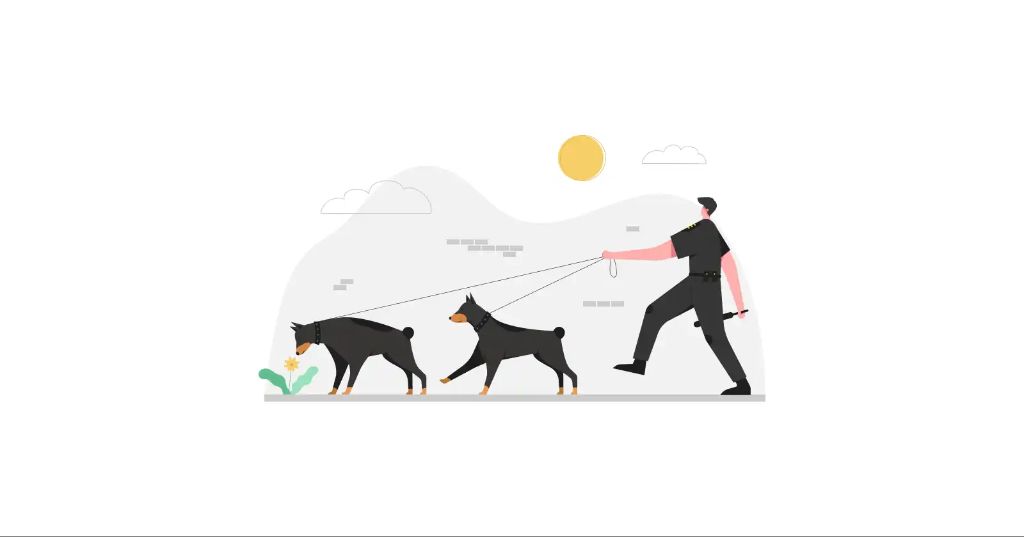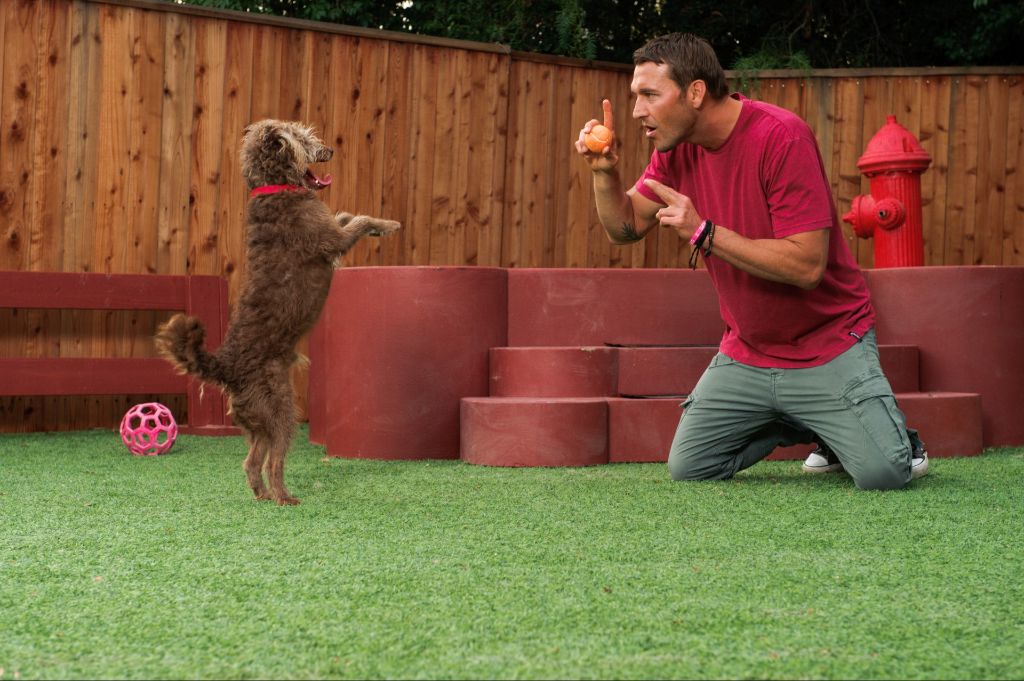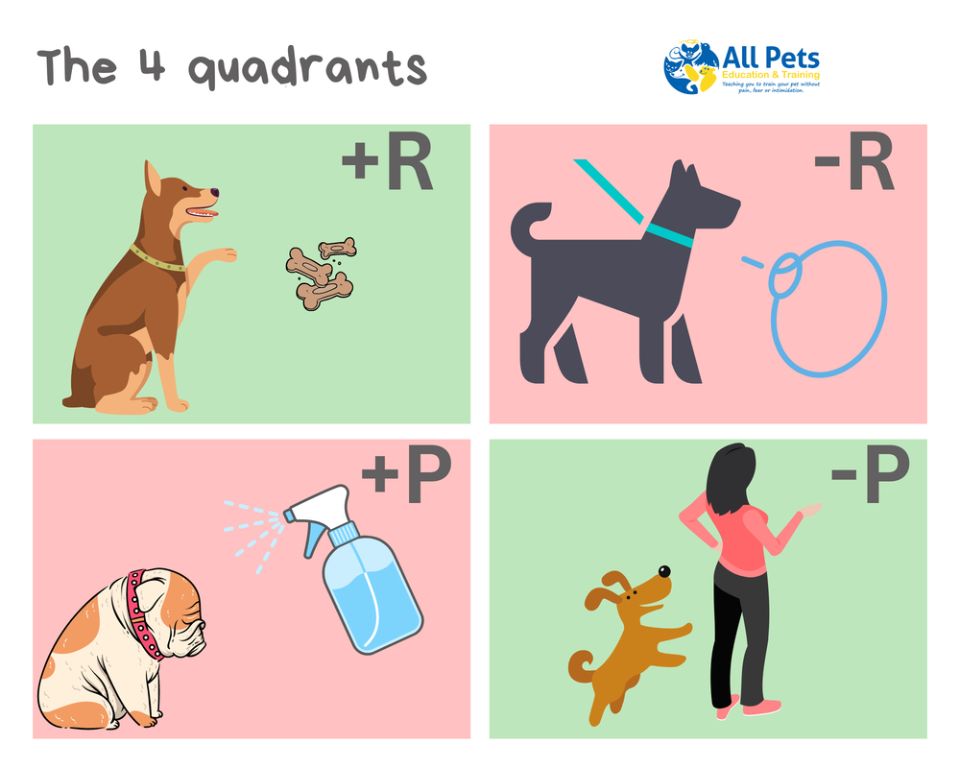What Is a ‘No’ Command for Dogs?
The ‘no’ command is a basic and vital cue to teach dogs in order to communicate when they are engaging in unwanted or unacceptable behavior. It is used to interrupt and stop a dog from doing something, such as chewing furniture or jumping on guests.
While similar to other commands like ‘leave it’ or ‘off’, the ‘no’ cue has a distinct purpose. ‘Leave it’ and ‘off’ are more for redirecting away from an object or person, whereas ‘no’ indicates the action itself needs to cease immediately. The dog should stop the behavior upon hearing ‘no’ and look to the handler for further direction.
According to dog training experts, teaching a solid ‘no’ command establishes boundaries and helps reinforce rules, which allows for better behavior and responsiveness over time (Source). It is an essential building block in effective communication between owner and dog.

When to Use the ‘No’ Command
The ‘no’ command should be used when a dog is engaging in undesirable behavior that needs to be stopped immediately. This includes things like chewing on furniture, begging for food, jumping on people, and digging in the yard. The key is to use ‘no’ for behaviors you want to extinguish, not for commands you are actively trying to teach.
According to dog training experts, ‘no’ is ineffective when teaching a dog a new skill or trick. The dog needs to learn what you want them to do, rather than just what not to do. Saying ‘no’ repeatedly can become meaningless background noise to dogs when overused. Reserve ‘no’ for moments when you need to urgently interrupt and stop a behavior in progress (Should you say no to your dog?).
The ‘no’ command is a useful tool to inhibit problematic behaviors that could lead to danger or destruction if allowed to continue. But it should not be a dog’s only training. Pair ‘no’ with positive reinforcement of preferred behaviors so the dog understands what actions you wish to promote.
How to Teach the ‘No’ Command
Teaching your dog the ‘no’ command requires patience and consistency. Start by gathering treats to reward your dog during training. Choose a clear hand signal to pair with the verbal command, like waving your finger back and forth. When your dog engages in an undesirable behavior like jumping up or chewing furniture, firmly say “no” and use the hand signal at the same time. Immediately reward your dog with praise and a treat if they stop the behavior. It’s important to reward good behavior and not just scold bad behavior [1].

Work on teaching the ‘no’ command in short, positive training sessions. Be consistent and use the command whenever you need your dog to cease an unwanted behavior. Pair the ‘no’ with redirection to an alternative good behavior that can be rewarded. With regular practice, your dog will learn that ‘no’ means to stop what they are doing. Be patient, as it may take repetitition for your dog to reliably respond to the ‘no’ cue [2].
Tips for Effective ‘No’ Training
To get the most out of teaching your dog the “no” command, keep these training tips in mind:
Be consistent with the command and signal you use. Always use the same word and gesture so your dog learns to recognize it in any situation. Having multiple ways to say “no” will only confuse your dog.

Reward good behavior, don’t just punish unwanted behavior. Motivate your dog to listen and obey by giving treats and praise when they respond well to “no.” This positive reinforcement is key for effective training.
Use the “no” command sparingly. Overusing it can dilute its meaning and make your dog less responsive. Reserve “no” for important situations you want your dog to avoid.
Practice the “no” command in various environments. Start training at home, then move to more distracting areas like the backyard, a park, or out on walks. This ensures your dog obeys the command anywhere.
Be patient and consistent during the training process. Getting a reliable “no” takes repetition and time before a dog understands what is expected. But it’s worth the effort for better behavior.
For more tips, see this in-depth guide on teaching “no” from PetSafe: https://petsafe.net/learn/teaching-dog-no
Common Mistakes
There are some common mistakes people make when training the ‘no’ command that can undermine its effectiveness. Saying ‘no’ in an angry or loud tone can make some dogs fearful. It’s important to use a firm but calm tone when giving the command. Another mistake is failing to reward good behavior after using ‘no’. If you tell your dog ‘no’ when they’re doing something undesirable, be sure to praise or give a treat when they stop the behavior. This connects the command to the proper response.
Using ‘no’ too frequently is another error. This can weaken the significance of the word. It’s best to use it selectively for behaviors you most want to eliminate. Inconsistent hand signals when pairing ‘no’ with a visual cue is also problematic. Using the same gestures each time you give the command helps reinforce the meaning. Avoiding these common training mistakes will lead to better comprehension and response when telling your dog ‘no’.
Alternative Commands
While “no” is a common command for dogs, some owners prefer using alternative words that may sound less harsh. Popular alternatives to “no” include:
“Leave it” – This command tells the dog to ignore an object or tempting situation. For example, if the dog is about to pick up something dangerous or undesirable, saying “leave it” signals them to refrain from touching it. Teaching a solid “leave it” command prevents the need to use “no” as frequently.
“Off” – Rather than saying “no” when a dog jumps on furniture or people, “off” specifically instructs them to get down. This provides clearer direction. Consistently using “off” helps reinforce that furniture, counters, and people are off limits.
“Drop it” – If the dog has something in their mouth they shouldn’t, “drop it” tells them to release the object. This is more precise than a generic “no.” “Drop it” can prevent the dog from running off with inappropriate items.
Relying on these types of commands eliminates overusing “no” for multiple contexts. They provide clearer cues for the dog regarding desired behavior in specific situations. Still, “no” may be needed at times, but teaching strong alternative commands can reduce dependence on it.
Sources:
What are some creative phrases or alternative command words you use or have heard others use?
byu/sunspace10 inDogtraining
Unique Command Words For Dogs – Alternative Words For Popular Commands
When to Avoid ‘No’
Although the word ‘no’ can be an effective command for some dog behaviors, there are certain situations where it is better avoided:
For teaching basic obedience cues like your dog’s name, ‘come’, ‘sit’, etc., it is better to use positive reinforcement techniques rather than ‘no’. Saying ‘no’ can inhibit the learning process, especially for young puppies who are still building foundational skills. Using reward-based methods for foundational commands will set up success.
‘No’ should also be avoided if your dog is displaying anxious or aggressive behaviors, as it can potentially escalate the situation. The ambiguity of ‘no’ in terms of defining the exact behavior to stop can create frustration and worsen anxiety. It is better to redirect their attention to a more positive behavior instead.
According to this article, using ‘no’ as a punishment can often inhibit all behaviors in a dog, not just the undesired behavior you want to stop. This highlights the importance of establishing when not to use ‘no’ for maximum effectiveness.
Pairing with Positive Reinforcement
When teaching the “no” command, it’s crucial to pair it with positive reinforcement. This means rewarding your dog with treats and praise when they respond appropriately to “no.” Use rewards to motivate your dog to listen to the command and create positive associations with stopping an unwanted behavior.

For example, if your dog jumps up when you’re preparing their food, say “no” firmly when they jump, then immediately reward with a treat and praise when all four paws are on the floor. This reinforces that complying with “no” leads to good things. With patience and consistency, your dog will learn that “no” means to cease what they’re doing.
Positive reinforcement builds a cooperative partnership between you and your dog. They want to listen because it benefits them. This is more effective than punishing a dog for disobeying “no,” which can provoke anxiety and confusion. Always set your dog up for success by motivating them to respond to “no” through rewards and upbeat encouragement.
Consistency is Key
Consistency is crucial when training a dog to understand the “no” command. You must use the same tone of voice, hand signals, and rewards each time so your dog doesn’t get confused. As the American Kennel Club advises, “Dogs are not born understanding English. They are very good at learning words, but need to be taught word meanings very clearly and concisely.” https://www.akc.org/expert-advice/training/importance-consistency-training-dog/ If different family members use “no” in different ways, it will undermine the training. All family members should follow the same rules and cues for “no” when interacting with the dog.
Regular practice is also essential to reinforce the meaning of “no” and ensure your dog responds appropriately each time. As the dog training site Advanced Canine Techniques explains, rewarding your dog inconsistently when training can lead to confusion. Consistent rewards for ceasing the undesired behavior helps solidify the meaning of “no.” https://advancedcaninetechniques.com/2020/10/benefits-of-consistency-in-dog-training/ With regular, consistent training, your dog will learn to reliably stop an undesired behavior when you say “no.”
Benefits of a Reliable ‘No’
Teaching your dog a solid ‘no’ command can provide many benefits for both you and your pet. Some of the top advantages of a reliable ‘no’ include:
Safer – A dog that understands ‘no’ is less likely to get into dangerous situations or exhibit harmful behaviors like chewing electrical cords. Being able to instantly stop a behavior can prevent accidents or injuries.
Enhances bonding and communication – Consistently using the ‘no’ command establishes a clear means of communication between owner and dog. Your pet will better understand your guidance, strengthening your bond.
Well-behaved and welcomed pet – A dog that respects ‘no’ is better behaved in public settings like the vet, groomer, or around guests in your home. This makes your dog more welcome in various environments.
As Brandon McMillan states, “‘No’ is one of the most important words you can teach a dog.” He explains that a reliable ‘no’ provides “a way to immediately stop unwanted behavior” (source). Teaching ‘no’ creates opportunities for safer interactions and improved communication between owners and dogs.
